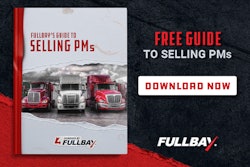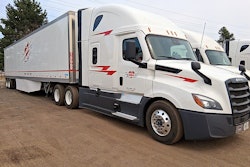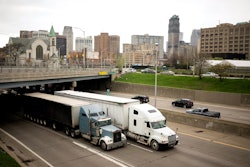New Mexico Gov. Bill Richardson signed legislation that allows motor vehicle lease and rental contracts to include broad form indemnification clauses. The original version of the bill prohibited all lease contracts from including such clauses, but the Truck Renting and Leasing Association and the New Mexico Trucking Association successfully lobbied to exempt motor vehicle lease contracts.
Con-way Truckload in May announced a new driver compensation package that includes payment based on practical miles and an annual incentive compensation plan — a companywide reward of up to 7 percent of annual pay for eligible drivers if the company meets its financial goals.
The Internal Revenue Service said purchasers of qualified Nissan North America Inc. vehicles may continue to claim the alternative motor vehicle credit. The allowable credit amount for the 2007 Altima Hybrid — Nissan’s only certified hybrid vehicle — is $2,350. Consumers seeking the credit may want to buy early because the full credit is only available for a limited time, based on the manufacturer’s sales volume.
Purchasers of Toyota and Lexis hybrid vehicles still qualify for a sharply reduced alternative motor vehicle credit, but only through Sept. 30. Vehicles purchased from April 1 until that date qualify for 25 percent of the full credit as a result of sales reaching certain benchmarks.
The American Trucking Associations says it sees problems with a proposal to charge motorists for driving into Manhattan under a plan unveiled in late April to ease environmental stress and cope with New York City’s booming population. The package of proposals outlined by Mayor Michael Bloomberg’s Office of Long-term Planning and Sustainability focuses on the city’s transportation, energy, water and housing networks now being used by 8.2 million people.
Part of the plan is a proposal to charge motorists for driving into Manhattan below 86th Street on weekdays from 6 a.m. to 6 p.m.; trucks would be charged $21 a day, and cars would be charged $8. “In setting the fee, there’s no magic number, but it has to be high enough to encourage more people to switch to mass transit and low enough not to break the bank — for businesses and for those who have to drive,” Bloomberg said.
Congestion pricing would reduce traffic and pollution while generating money for other transit projects — nearly $400 million in just its first year, according to the plan. “As a test run, we will seek state authority for a three-year pilot project, and we are very optimistic that, in working with state officials, we will secure hundreds of millions of dollars in federal funding for it,” Bloomberg said.
Bill Graves — president and chief executive officer of the American Trucking Associations — said such pricing schemes are unfair, ineffective and ignore the nation’s real transportation needs. “Even in London, home of the model urban congestion pricing scheme, new reports show congestion is just 8 percent below its pre-program levels and continues to rise — and this is after spending nearly half of the $14 charged per vehicle for entering the city’s center on overhead,” Graves said.
“The premise is that congestion pricing will give motorists better road access for a price,” Graves said. “In many instances, however, congestion pricing does not markedly reduce congestion, it just raises revenues — or taxes.”
At its core, congestion pricing is designed to change driving behavior, Graves said. But if there’s no change in driving behavior, there would be no benefits related to congestion and pollution mitigation. “Proponents of congestion pricing say drivers have choices,” he said. “But many motorists cannot change their work hours or child-care needs. Not everyone has access to public transit. The motorist’s alternative to paying more at the toll booth will be to find another route that is time-consuming, shifting congestion to other roads and neighborhoods.”
The same will hold true for truck drivers, Graves said. “Because shippers, not trucks, determine delivery times, trucks will simply shift from tolled bridges and tunnels to untolled routes and other roadways outside of the congestion zone boundaries,” he said.
“In short, congestion pricing increases cargo transportation costs and hurts the economy.”
-Dean Smallwood










